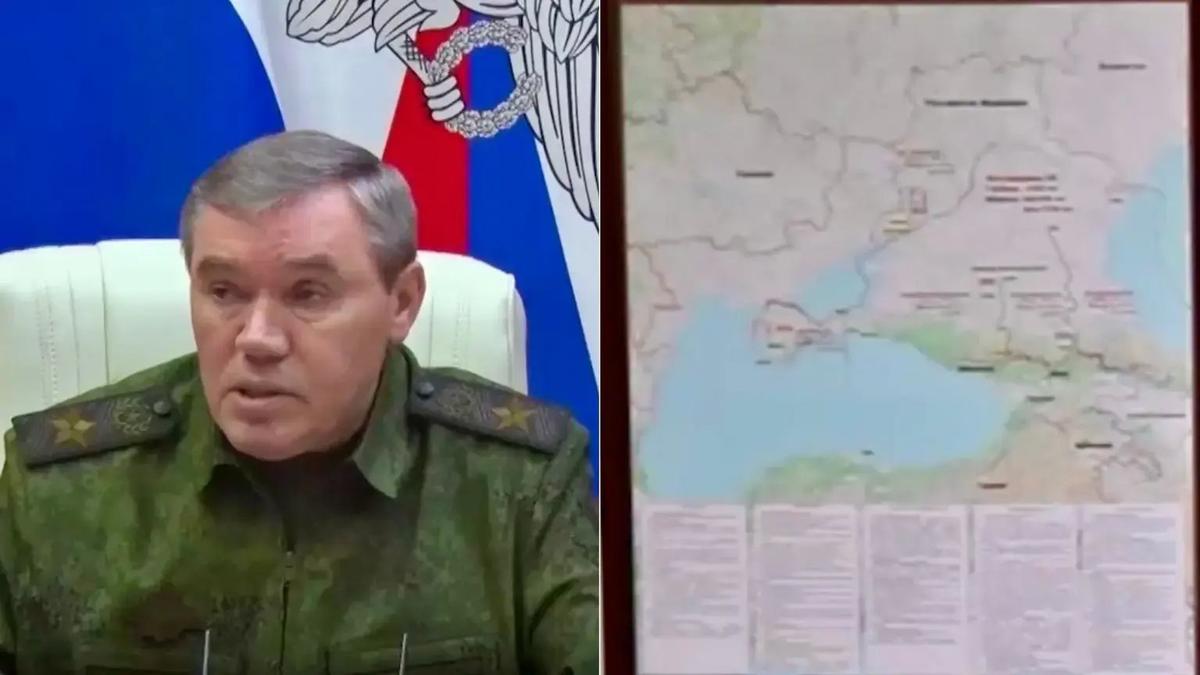


After a meeting hosted by French President Emmanuel Macron on Thursday, 26 countries have pledged to create a “reassurance force” to provide security guarantees for Ukraine in the event that a peace agreement with Russia is reached. Vladimir Putin reacted by saying that Russia would target any European troops deployed in Ukraine.

Jennifer Mathers
Senior Lecturer in International Politics, Aberystwyth University
Warning that if they appeared in Ukraine while Russia’s “military operation” was still underway, “we proceed from the fact that these will be legitimate targets for destruction”, Putin added that if a peace deal were eventually agreed, he simply did not see “any sense in their presence on the territory of Ukraine, full stop.”
Moscow is maintaining its demand that any peace deal should involve Ukraine ceding its regions that are occupied or part occupied by Russian troops: Crimea, Donetsk, Luhansk, Kherson and Zaporizhzhia. But new evidence has come to light suggesting that Putin’s territorial ambitions in Ukraine extend well beyond these.
A map spotted in the background during a briefing given by Russia’s chief of the general staff, Valery Gerasimov, in August, shows the two countries divided by a thick black line. On the Russian side of the line are not only the five publicly claimed regions of Ukraine but also the territories of Odesa and Mykolayiv.

Russian Chief of the General Staff Valery Gerasimov speaks during a briefing, 30 August 2025. Photo: Russian Defence Ministry
These areas, which hug Ukraine’s Black Sea coastline, are of considerable geostrategic significance as Russian occupation of Odesa and Mykolaiv would go a long way towards fulfilling one of Russia’s longstanding ambitions: domination of the Black Sea region.
Control of this territory would give Russia a land corridor to Transnistria, an unrecognised breakaway region of eastern Moldova with strong pro-Russian sympathies. The leaders of Transnistria declared independence from Moldova following a civil war in the early 1990s, and in a 2006 referendum, 97% of the region’s electorate supported Transnistria joining Russia. Russia currently has approximately 1,500 troops stationed there, and the territory has long been discussed in the West as a possible platform for a Russian invasion of Moldova.
Like Ukraine, Moldova was formerly part of the Soviet Union but is now orienting itself more towards western Europe and is currently seeking EU membership.
In addition to putting Russia in a strong position to exert pressure on Moldova, a more significant Russian presence in the Black Sea would increase Moscow’s ability to project power in neighbouring regions. This includes the Mediterranean, the Middle East and Africa.
The Black Sea is also a vital site for east-west transport and communications. So much so that the European Union announced a Black Sea strategy in May. The strategy recognises the region’s significance for different forms of security, including its importance for the environment, access to energy, trade and economic links, which the EU plans to address by developing mutually beneficial partnerships with countries in the region.
Russian control of Ukraine’s Black Sea coast would be disastrous for Ukraine as it would mean the loss of Ukraine’s naval assets, which make extensive and effective use of maritime drones against Russian ships and targets in Russian-occupied Crimea.
The Black Sea coast also plays an important role in Putin’s use of Russian imperial history to justify his war against Ukraine.
Being cut off from direct access to the Black Sea would also severely restrict Ukraine’s ability to export agricultural produce, an important source of income for an economy that has been hit hard by the war. Re-establishing and expanding Ukraine’s role as a producer of food for the world also forms the centrepiece of Kyiv’s efforts to build stronger relationships with Africa and other developing regions.
In addition to its strategic importance, these regions along Ukraine’s Black Sea coast also have special historical and symbolic significance for Putin, who has described Odesa as a “Russian city” and claimed that the entire coastal area rightfully belongs to Russia as spoils of its war with Turkey in the 18th century.
The Black Sea coast also plays an important role in Putin’s use of Russian imperial history to justify his war against Ukraine. Catherine the Great significantly expanded the Russian empire into today’s southern Ukraine and Crimea, and for over a decade Putin has presented his own actions in Ukraine as a continuation of her legacy.

Ukrainian activists with tools for a mock execution demand the removal of a statue of Catherine the Great from Odesa following the Russian invasion, 2 September 2022. Photo: EPA
An important example of this practice came in April 2014, just weeks after Russia’s annexation of Crimea, when Putin used the phrase “Novorossiya” for the region on Russian television. By invoking this historical term, which dates from Catherine the Great’s reign and denotes a large part of southern Ukraine including Crimea, Putin was signalling his intention to follow in the footsteps of the 18th century ruler and claim these lands for Russia.
In 2014, Moscow not only made a rhetorical claim on the city of Odesa and its surrounding region — it took active steps to turn that claim into reality. In the spring of that year, Russia used disinformation to persuade residents of eastern Ukraine that the government in Kyiv did not have their best interests at heart and even posed a danger to them. At the same time, Russia provided money, weapons and training to local militant groups looking to stir up trouble.
These efforts were not limited to the Donbas region, where they met with some success. They were also attempted in Odesa, where they were rebuffed. More than a decade later, a map on the walls of Russia’s Ministry of Defence showing the Odesa region as part of Russia demonstrates that Moscow has not abandoned its ambition to gather up lands that were once part of the Russian empire.
As Kyiv’s European allies debate the extent of their involvement in providing security guarantees for Ukraine, there are still plenty of unanswered questions about the precise nature of the reassurance force being planned by the “coalition of the willing”. But there is no question about the need for Ukraine’s international supporters to provide Kyiv with the strongest possible security guarantees.
This article was first published by The Conversation. Views expressed in opinion pieces do not necessarily reflect the position of Novaya Gazeta Europe.
The Russian government has banned independent media. We were forced to leave our country in order to keep doing our job, telling our readers about what is going on Russia, Ukraine and Europe.
We will continue fighting against warfare and dictatorship. We believe that freedom of speech is the most efficient antidote against tyranny. Support us financially to help us fight for peace and freedom.
By clicking the Support button, you agree to the processing of your personal data.
To cancel a regular donation, please write to [email protected]
VPNovaya
Help Russians and Belarusians Access the Truth

